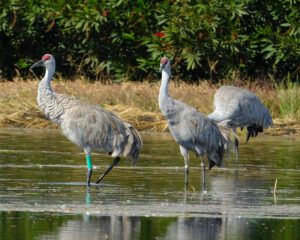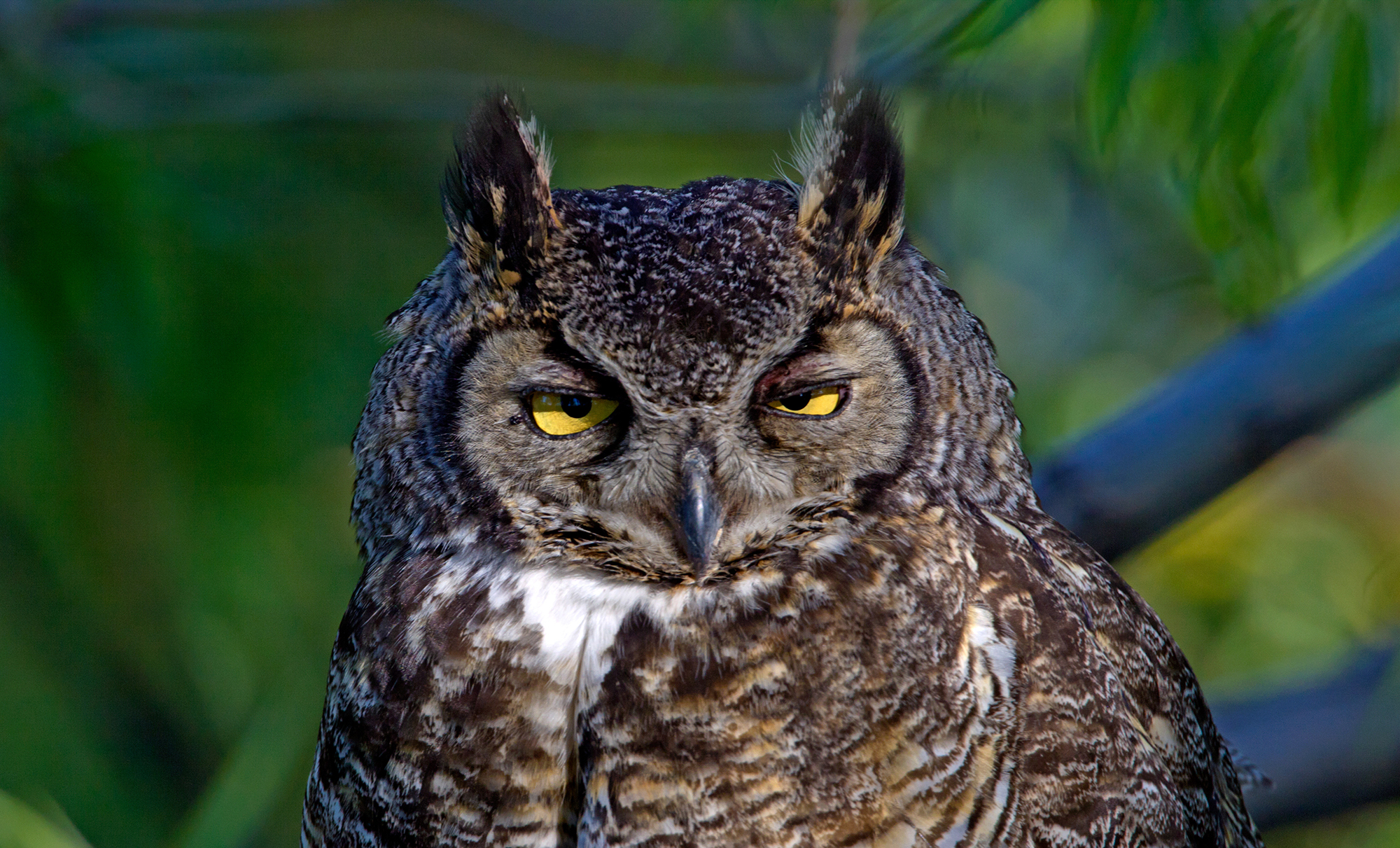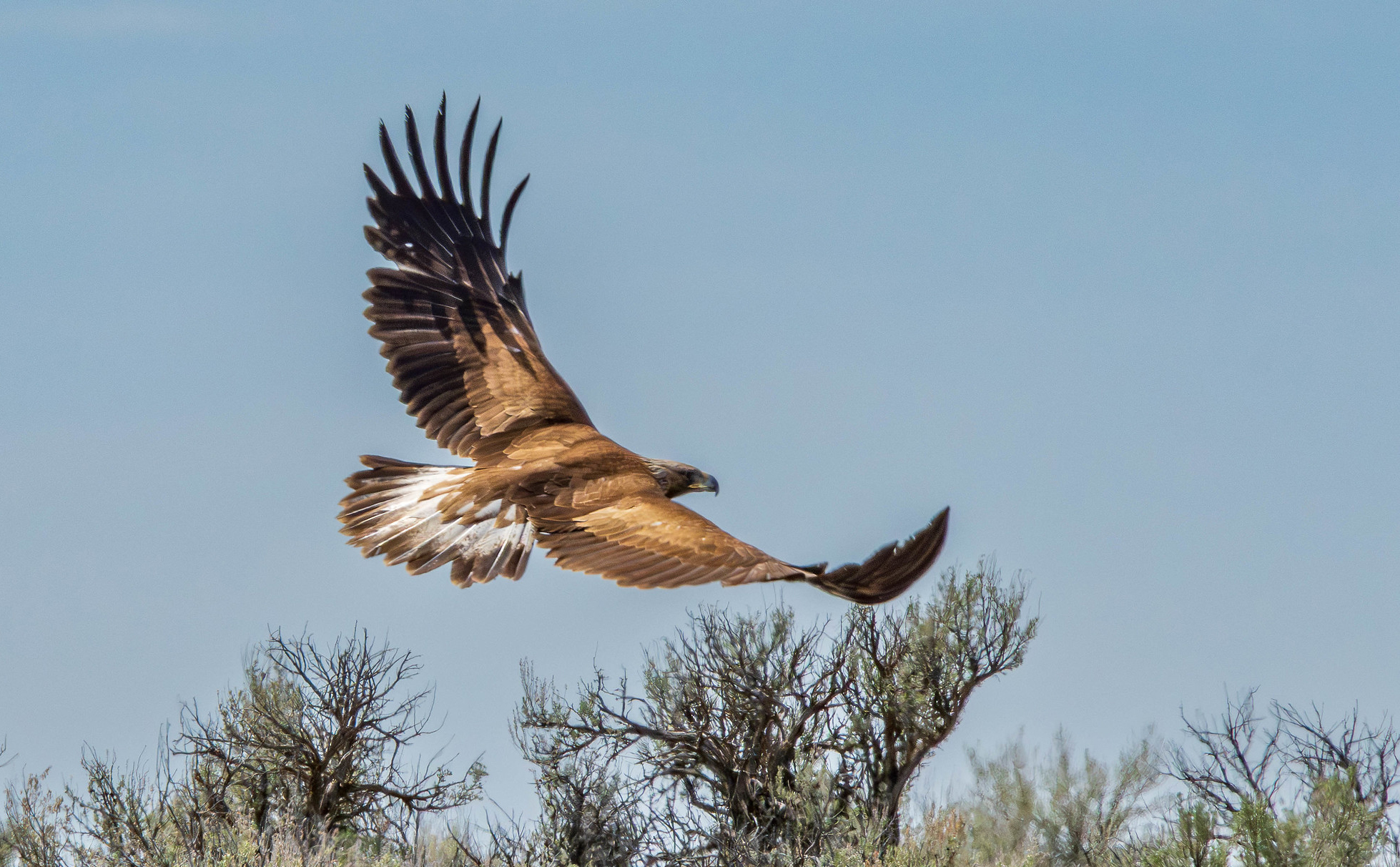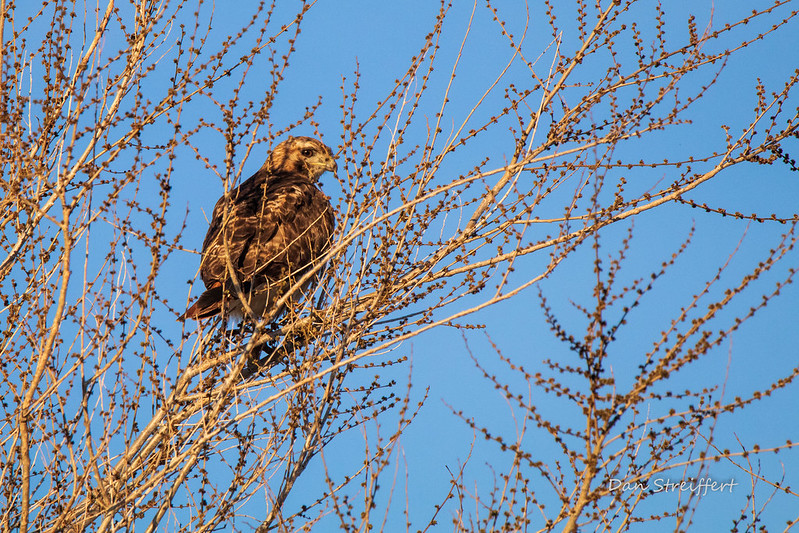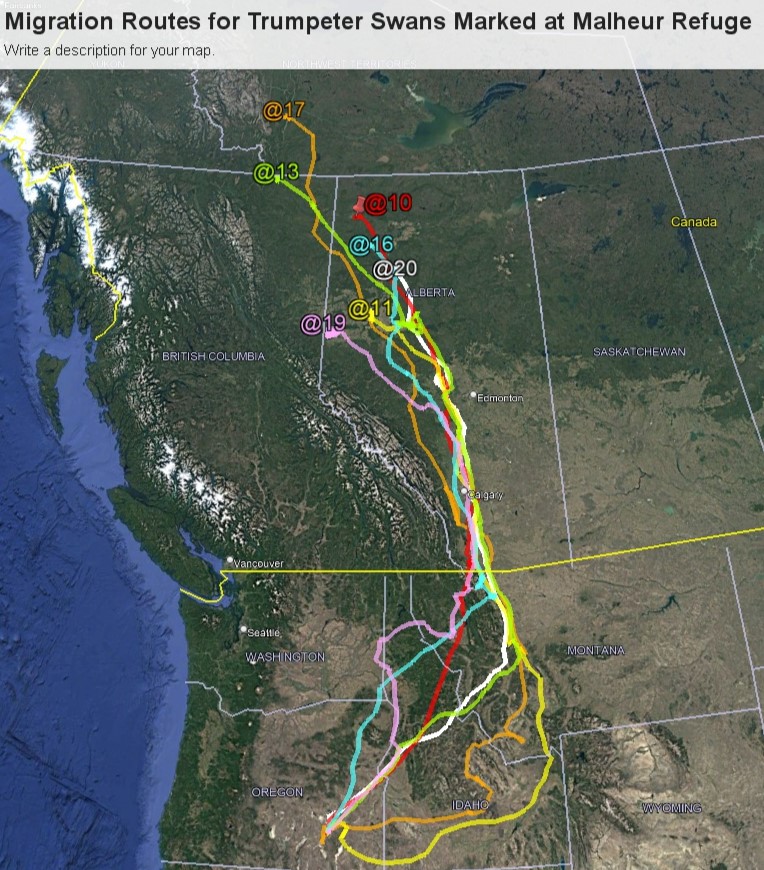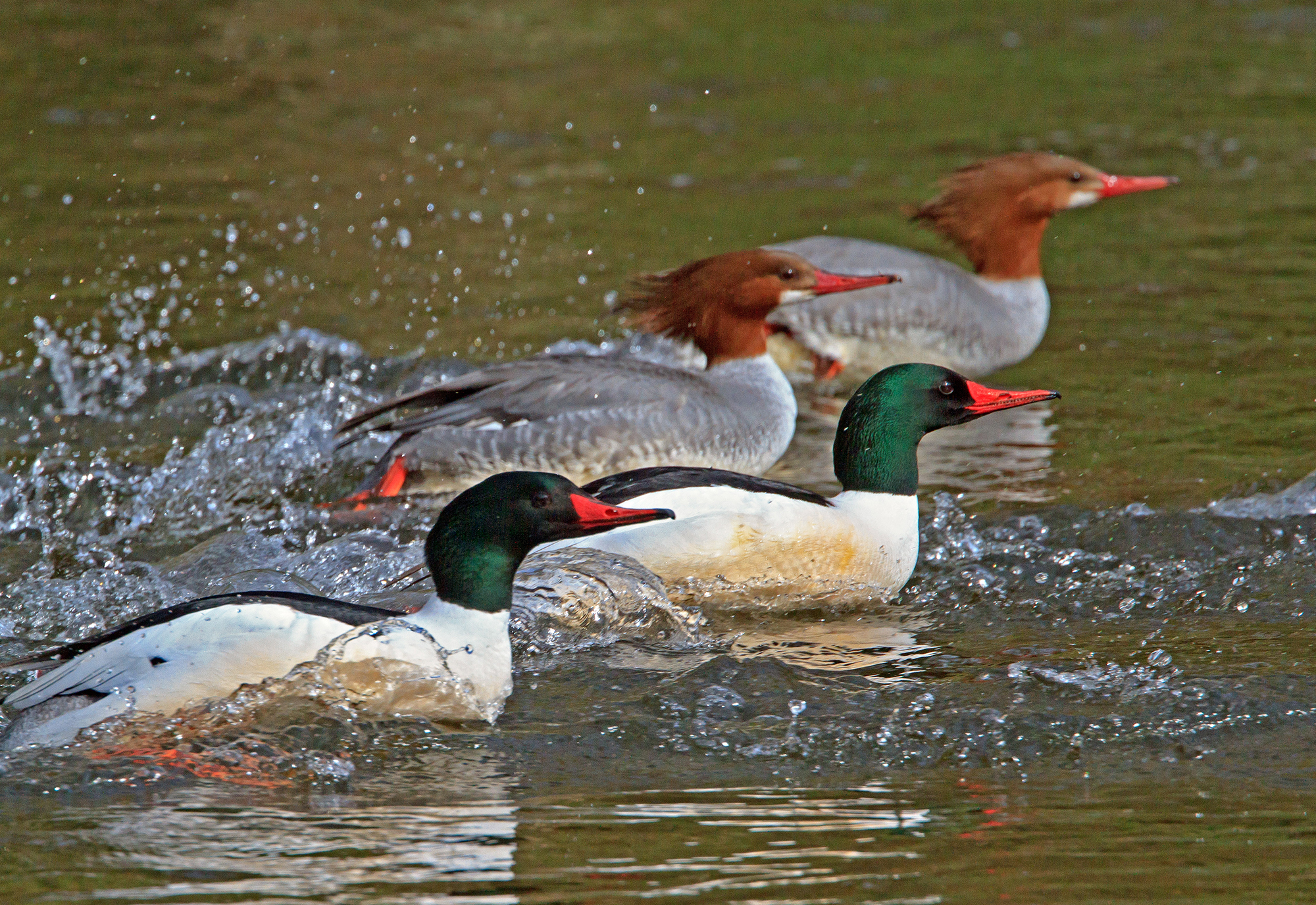Written by Peter Pearsall/Photo by Peter Pearsall
Soaring on wide, black-tipped wings over North America’s inland lakes, rivers and reservoirs in summer, the American white pelican is an impressive bird even from afar. With nearly all-white plumage and a foot-long bill, these ponderous waterbirds are difficult to confuse with any other species in our area.
The American white pelican breeds in interior North America and spends winters along the southern coasts of the U.S. down into Central and South America. It is one of our continent’s largest native birds, measuring 50-70 inches from beak to tail and weighing between 11 and 20 pounds on average. White pelicans have one of the widest wingspans of any North American bird—averaging more than 100 inches from wingtip to wingtip, second only to the California condor’s span.
In the Northern Great Basin, flocks of American white pelicans may be seen far from water, drifting lazily on thermals high above basin floors as they move between feeding and breeding areas. Pelicans are known by a variety of collective nouns, including a “brief”, “pod”, “pouch”, “scoop”, “squadron” and “armada” of pelicans. The latter is particularly apt for the American white pelican, which often congregates in large flocks on shallow waterways to find food.
Unlike the brown pelican of coastal North, Central and South America, white pelicans do not dive from the air for their prey. They instead capture prey while swimming, sometimes working together in groups to scoop up fish, crustaceans and amphibians from the shallows. At Malheur Lake, white pelicans feed predominately on native redband trout, tui chub, various sucker species, and the ubiquitous, invasive common carp. American white pelicans can eat fish up to 14 inches long, making them one of just a few animals at Malheur Refuge capable of preying on nearly adult-sized carp.
Of the eight species of pelican found worldwide, only the American white pelican grows a vertical plate, or “horn”, near the tip of its bill during the breeding season. Both male and female white pelicans bear these plates, which are shed before eggs hatch in mid-summer.
White pelicans are abundant at Malheur Refuge during spring, summer and fall. Malheur Lake historically supported large colonies of breeding white pelicans, but fluctuating hydrologic conditions determine whether pelicans use the lake as a breeding site. During high water years, breeding occurs on islands and other isolated areas in the lake. In low water years, most white pelicans do not breed at Malheur Lake but will often stay throughout the summer as non-breeders, sometimes in flocks numbering in the thousands. Abundant carp populations in Malheur Lake are particularly enticing to non-breeding pelicans in summer, and peak numbers are usually seen by mid-July and early August. By mid-fall, most of the pelicans at Malheur Refuge have departed south for the winter.





